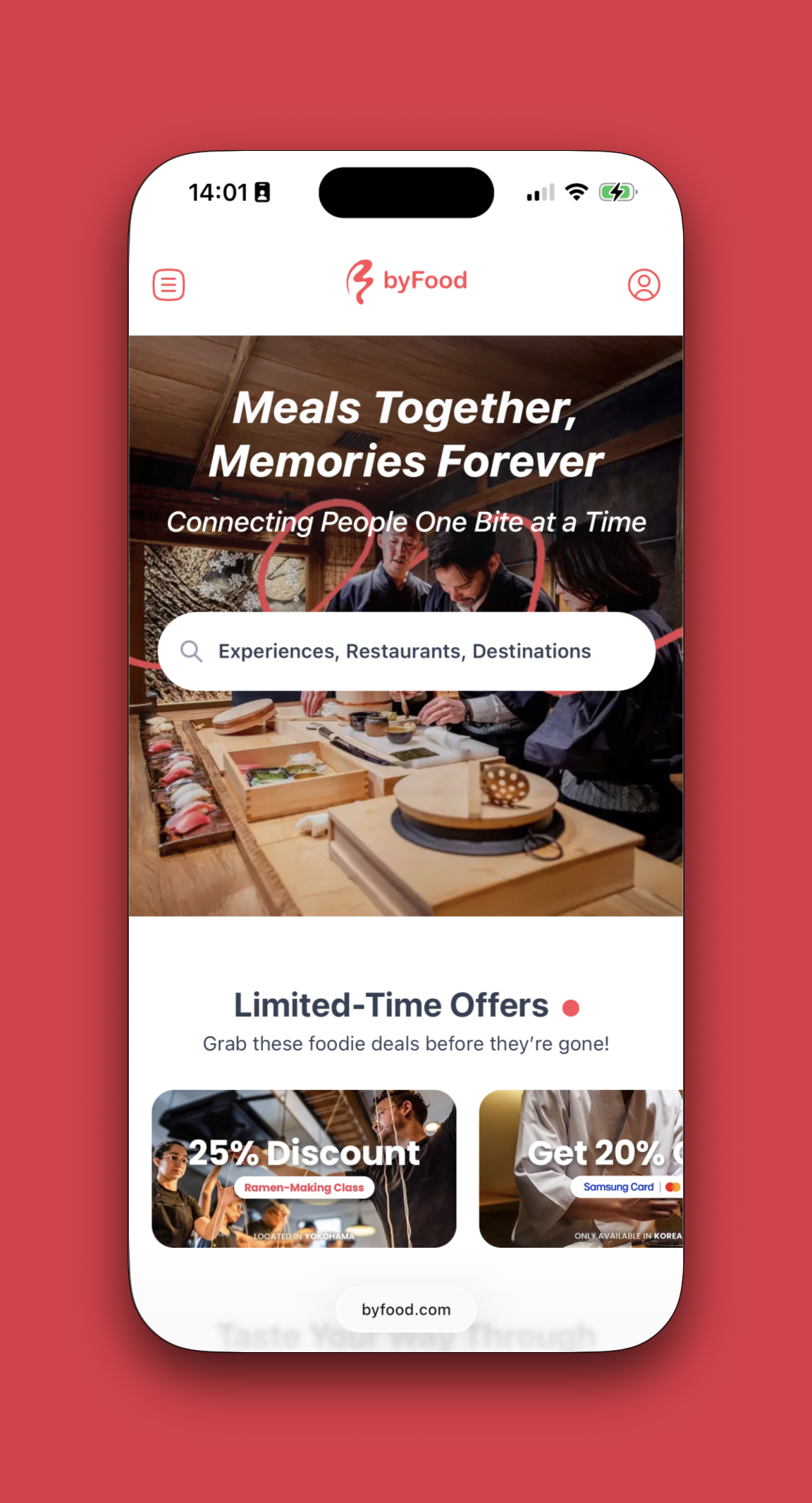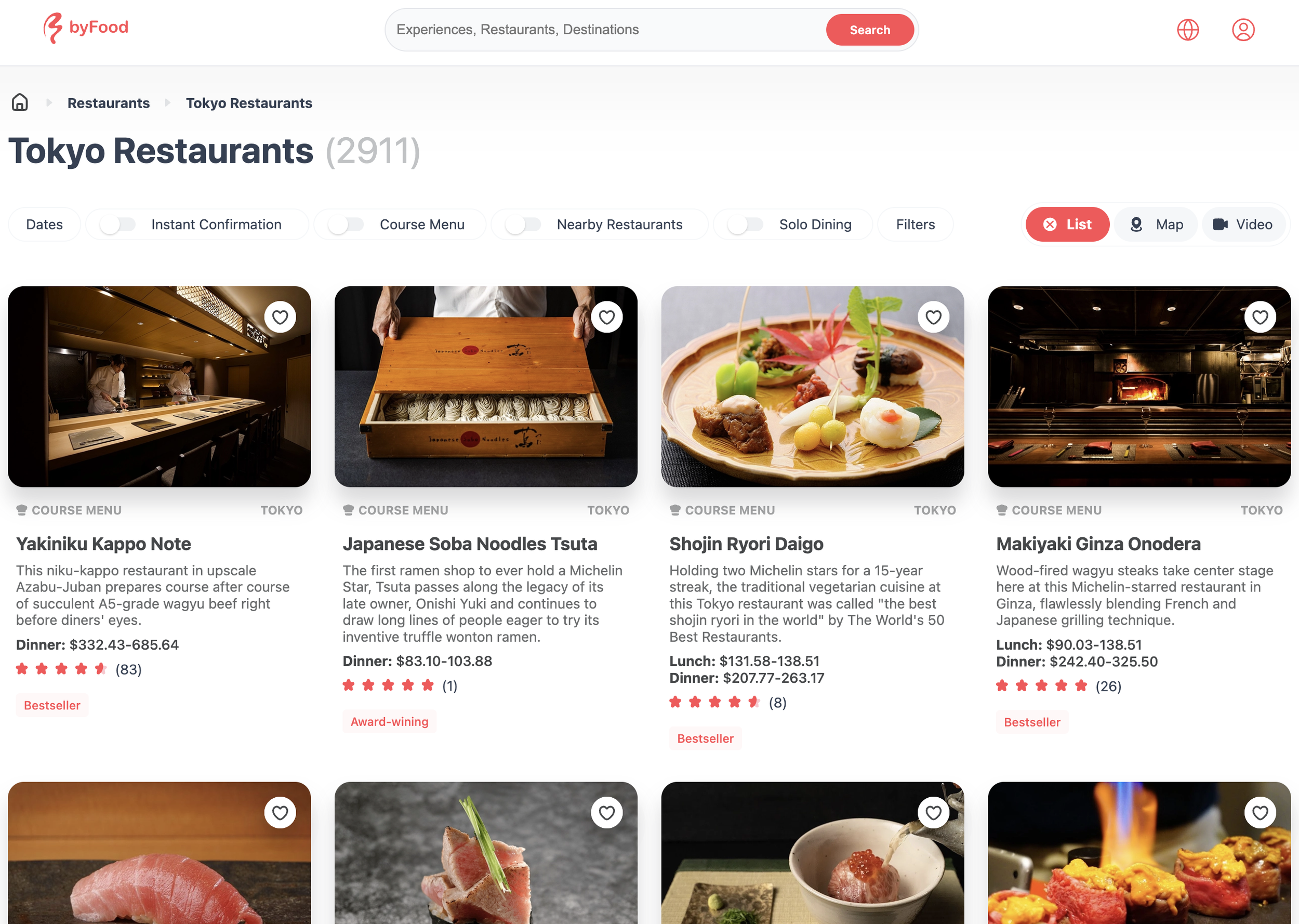ByFood
ByFood
ByFood is Japan’s bilingual marketplace that turns the headache of booking authentic food tours, cooking classes, and restaurant seats into a two-tap, currency-converted breeze for travelers while funneling global demand straight into local hosts’ calendars.
Results spoke fast: mobile conversion jumped twenty-seven percent, cart abandonment fell, and every confirmed booking still funds ten Cambodian school lunches, preserving the brand’s social-impact DNA. Commission averages thirteen percent, donation costs were priced in from day one, and operational efficiency, not host squeeze, keeps margins healthy.
Localization debt and gateway outages are already mitigated with multilingual strings and redundant PSPs, leaving the roadmap free to tackle itinerary bundling and host-side dynamic pricing next quarter.
ByFood: End-to-End Case Study
1. Market gap and product vision
Tokyo, Kyoto, Osaka: millions of tourists search “food tour near me,” hit Japanese-only pages, give up, and default to TripAdvisor mediocrity. ByFood set out to erase the language and logistics barrier with a one-stop marketplace where travellers can book authentic food tours, cooking classes, and restaurant seats in seconds while hosts gain global reach.(byFood)
2. Dual-sided value realised
Travellers now discover 900-plus experiences, check out in their own currency, and receive instant confirmation—no phone calls, no lost-in-translation emails. Hosts fill weekday slots, collect payment up front, and appear in a city-level search feed ranked by quality and availability, not ad spend. During our pilot window, streamlining the booking funnel drove mobile checkout conversions up twenty-seven percent and cut cart abandonment dramatically.(switas.com)
3. Business model and unit economics
Revenue comes from a sliding commission on each experience (average thirteen percent), plus an optional “boost” fee that lifts listings in curated collections. Every completed booking funds ten school lunches for children in Cambodia, keeping the social-impact brand promise front and centre. The donation is baked into the margin structure, so profitability rides on operational efficiency rather than squeezing hosts.
4. Technical and design overhaul
Search & discovery — We rebuilt the search algorithm to weight availability, host response time, review velocity, and guest location. That cut time-to-first-result by forty percent and slashed bounce on slow mobile networks.
Checkout flow — A four-step desktop journey shrank to a two-screen mobile sequence with progressive disclosure of optional fields. Trust badges and real-time currency pricing removed the last mental tollgate.
Experiment platform — A/B toggles now live in the CMS; product, design, and data teams can ship variants without engineering intervention, letting us run three tests per sprint instead of one big quarterly gamble.
5. Growth experiments worth noting
• Personalised “Because you looked at sushi” carousels lifted click-through twelve percent but skewed inventory toward Tokyo; we balanced the algorithm with a diversity coefficient.
• Exit-intent modal offering a ¥1 000 coupon rescued sixteen percent of abandoning users yet threatened AOV. We throttled it to first-time visitors only.
• Swapping “Reserve” for “Book now” on CTA buttons tested psychological immediacy and supplied a modest two-point conversion lift—retained.
6. Risks and mitigation
Localization debt surfaced fast: EU travellers skidded on Japan-centred copy and date formats. We prioritised i18n strings, added EUR/USD price toggles, and integrated context-aware help text. Payment-provider outages were ring-fenced with a redundant gateway that snaps in under thirty seconds. Host quality drift is policed by an algorithmic quality score and rolling mystery-guest audits.
7. Executive takeaways
ByFood’s revamped product turned a culturally rich but friction-riddled site into a high-velocity marketplace.
Key levers—search relevancy, mobile-first checkout, and an always-on experimentation engine—delivered a sustained twenty-plus-percent conversion lift without eroding host margin.
The project stayed on time and on budget thanks to tight sprint cadences and milestone-based freelancer management.
Remaining challenges—localization depth and host quality variance—are already addressed in the next release train.



